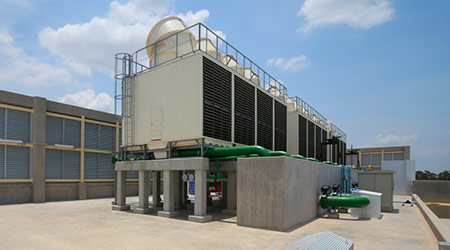
Facilities Make Progress On Greenhouse Gas Emissions Reduction Goal
February 6, 2018
In the absence of federal action, solving the climate crisis will take strong initiative at all civic levels, right down to the individual building. The good news is that many organizations have taken huge steps both in specifically reducing greenhouse gas emissions for which their buildings are responsible, and also generally reducing energy use. The goal of the Paris Climate Accord is a 50 percent reduction in greenhouse gas emissions by 2030, and many individual cities, states, and organizations are on track to meet that goal.
A recent report by the Urban Land Institute titled “Greenpoint Performance Report” shows that members of its Greenpoint Center for Building Performance demonstrated a 3.4-percent reduction in energy consumption, a 3.3-percent reduction in carbon emissions, and a 4.3-percent reduction in water use between 2015 and 2016. Since Greenprint started tracking building performance in 2009, the energy consumed by members’ properties has dropped 13.9 percent; carbon emissions have decreased 17.9 percent, and water usage has dropped by 12.1 percent. The reductions occurred even as building occupancy rose, suggesting that greater space usage does not necessarily cause a decline in building performance. These numbers also indicate these organizations are on target to meet their 50 percent reduction goal by 2030.
The annual performance report tracks and analyzes data from nearly 8,700 facilities managed by its partner members, including such big names as Hines and JLL.
Of course, facility managers have a plethora of options to reduce greenhouse gas emissions. Simply working to reduce energy use is a good first step. This story from the January issue of Building Operating Management discusses how air source heat pumps are gaining momentum because of better technology, reduced costs, and the ability to reduce energy use and carbon emissions.
Renewable energy is another option — getting more of a building’s power from non-dirty sources reduce that building’s overall emissions. This story from a recent issue of Building Operating Management looks at how renewable energy plays an important role in net-zero energy goals.
This Quick Read was submitted by Greg Zimmerman, executive editor, Building Operating Management. Read his cover story on the how sustainability and resilience complement each other.
Next
Read next on FacilitiesNet












